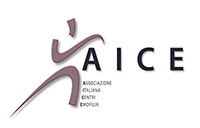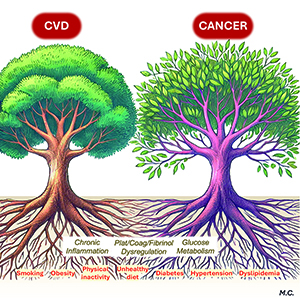Patient and public involvement in cancer-associated thrombosis research: necessary or glorified tokenism?

Submitted: 6 February 2024
Accepted: 11 March 2024
Published: 16 May 2024
Accepted: 11 March 2024
Abstract Views: 1086
PDF: 143
Publisher's note
All claims expressed in this article are solely those of the authors and do not necessarily represent those of their affiliated organizations, or those of the publisher, the editors and the reviewers. Any product that may be evaluated in this article or claim that may be made by its manufacturer is not guaranteed or endorsed by the publisher.
All claims expressed in this article are solely those of the authors and do not necessarily represent those of their affiliated organizations, or those of the publisher, the editors and the reviewers. Any product that may be evaluated in this article or claim that may be made by its manufacturer is not guaranteed or endorsed by the publisher.
Similar Articles
- Pier Mannuccio Mannucci, Growing weapons to fight hemophilia , Bleeding, Thrombosis and Vascular Biology: Vol. 2 No. 1 (2023)
- Giovanni de Gaetano, Author's Reply. Da la scheggia rotta usciva insieme parole e sangue: an unusual case of bleeding and the metaphor of a clinical trial , Bleeding, Thrombosis and Vascular Biology: Vol. 3 No. 3 (2024)
- Loredana Bury, Marco Malvestiti, Paolo Gresele, The 2024 Nobel prize in Medicine: impact on hemostasis and thrombosis research , Bleeding, Thrombosis and Vascular Biology: Vol. 3 No. 3 (2024)
- Paola Binetti, Thrombotic thrombocytopenic purpura: much done, but still a lot to do , Bleeding, Thrombosis and Vascular Biology: Vol. 3 No. 2 (2024)
- Giuseppe Auteri, Laura Ricci, Nicola Vianelli, Barbara Lovrencic, “Living under the sword of Damocles”: a psychological support project for patients with immune thrombocytopenia and their caregivers , Bleeding, Thrombosis and Vascular Biology: Vol. 4 No. 1 (2025)
- Coenraad H. Hemker, The clinical usefulness of measuring thrombin generation , Bleeding, Thrombosis and Vascular Biology: Vol. 2 No. 1 (2023)
- Mattia Galli, C. Michael Gibson, Dominick J. Angiolillo, Factor XI inhibitors in adjunct to antiplatelet therapy: the ultimate dual-pathway inhibition? , Bleeding, Thrombosis and Vascular Biology: Vol. 2 No. 3 (2023)
- Giovanni de Gaetano, Welcome to AICE and sincere wishes for peace for the new year 2024 , Bleeding, Thrombosis and Vascular Biology: Vol. 2 No. 4 (2023)
- Daniela Poli, Emilia Antonucci, Gualtiero Palareti, Roberto Facchinetti, Pietro Falco, Giuseppina Serricchio, Teresa Lerede, Lucilla Masciocco, Paolo Gresele, Sophie Testa, Major bleedings in mechanical prosthetic heart valves patients on Vitamin K antagonist treatment. Data from the PLECTRUM Study , Bleeding, Thrombosis and Vascular Biology: Vol. 1 No. 2 (2022)
- Gianfranco De Girolamo, Luca Sarti, Sonia Cecoli, Karin Bonora, Chiara Ajolfi, Francesco Bellelli, Valeria Coluccio, Gualtiero Palareti, Marco Marietta, Safety and efficacy of treatment with vitamin K antagonists in patients managed in a network of anticoagulation services or as routine general care , Bleeding, Thrombosis and Vascular Biology: Vol. 1 No. 1 (2022)
You may also start an advanced similarity search for this article.

 https://doi.org/10.4081/btvb.2024.125
https://doi.org/10.4081/btvb.2024.125










